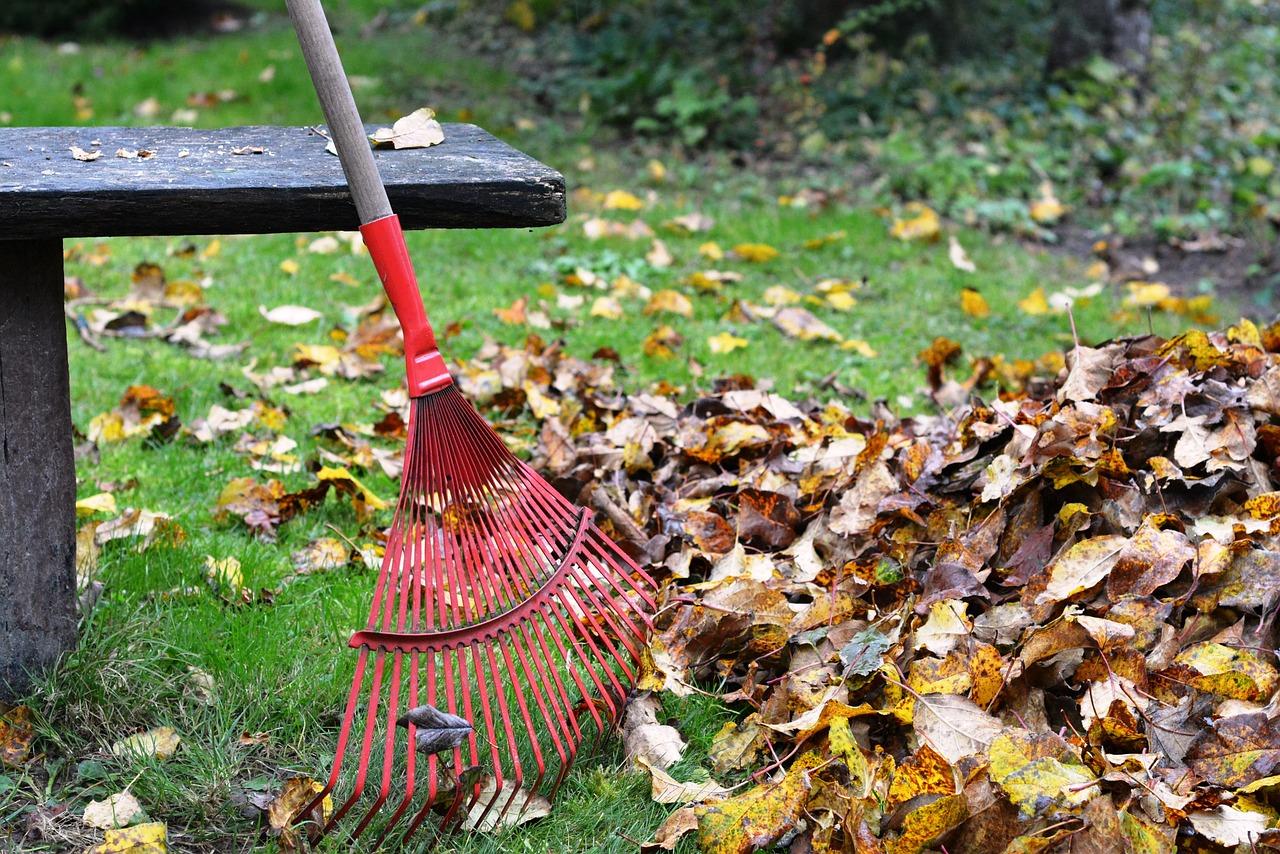
Sustainable Gardening
- Leave some leaves, dead plant stalks, and branches in a portion of your garden (or the backyard). These materials provide winter shelter for butterflies, fireflies, moths, and other 'good' insects that provide pollination and pest control. To learn more on this topic, watch our free 1-hour webinar recording: To Rake or Not to Rake.
- If you need to discard pesticides, check the product label for disposal instructions. Contact your local government's solid waste or environmental department to find out if they have a hazardous waste collection program for the disposal of pesticides.
Trees & Shrubs
- Prune shade trees after the leaves have fallen off. Begin by removing all dead, diseased branches, and making any necessary cosmetic cuts. Do not cut branches flush with the trunk. Leave the branch collar (swollen area on the trunk of a tree or a larger branch) but do not leave a stub.
- Topping is not the correct pruning technique to help control the size of a tree. Crown reduction, pruning entire branches at their point of origin, is recommended if a tree must be reduced in size.
- Protect plants vulnerable to winter injuries like azalea, rhododendron, holly, cherry laurel, boxwood, mountain laurel, or those at their northern limit for winter hardiness like newly planted Southern magnolia, aucuba, or Camellia spp. Hammer stakes placed about 12-18 inches away from the plant to support a barrier made from materials such as burlap or plastic to buffer the wind.
Edible plants
- If you have not planted a cover crop, keep vegetable garden beds covered with leaves to minimize the risk of soil erosion, nutrient run-off, and weeds. Bags of leaves from your yard or neighbors’ yards are plentiful this time of year and allow us to sustainably recycle nutrients.
- Have you tested your soil? Send a sample to a soil testing lab to get important baseline information on soil pH and levels of nutrients, organic matter, and lead (Pb). A soil test can be done anytime as long as the ground is not frozen.
- Protect fig trees from freezing temperatures. Any exposed wood is vulnerable to winter damage (temperature under 20 degrees F.).
-
In asparagus plantings, cut the foliage down to 2-inch stubs after frost when the foliage yellows. A 4- to 6-inch layer of mulch will help control weeds and add organic matter and nutrients.
Compost
- Fallen leaves are an excellent addition to a compost bin. Do not add branches and other woody materials unless they are broken into smaller pieces.
- Learn how to set up an indoor composting or vermicomposting system, if you don't have a place for composting outdoors.
Flowers
- Mulch your perennials after the first hard freeze. This helps to protect them from frost heaving caused by the freezing and thawing of the soil. Mulch helps moderate temperature fluctuations, reducing this problem.
- Dig up summer bulbous and tuberous plants, such as cannas, dahlias, gladiolus, caladium, or tuberous begonia, and store them indoors for the winter. After digging, remove loose soil from the roots, cut the foliage back to just above the bulb, and spread them out to cure in a dry area for one to three weeks. Allow a 4-6” stem to remain above cannas and dahlia tubers. Store bulbs in paper or mesh bags, cardboard boxes, or nylon stockings. Cover or layer the bulbs with peat moss, perlite, vermiculite, or shredded newspaper. Store in a cool (40- 50 degrees), dry place and check periodically for shriveling or decay.
- Save and store seeds to plant in your garden next year or to share at seed exchanges.
Lawns
- According to the Maryland Lawn Fertilizer Law, fertilizer cannot be applied to Maryland lawns by homeowners between November 15th and March 1st.
- Save the time and effort of raking, blowing, and picking up leaves. Leaves are a valuable source of organic matter to improve the soil in a lawn and garden. Leaves that fall onto the lawn can be shredded with a lawnmower and left to decompose naturally in place. Fallen leaves also make an excellent mulch for garden beds. Shred them first by running over them with a mulching mower or a leaf shredder.
- It is too late to broadcast lawn seed and expect it to survive the winter. Consider waiting until early spring.
Wildlife
- Remove leaves that have fallen into uncovered ponds. Decomposing leaves will produce gasses that can sicken or kill fish when trapped under a layer of ice. Then cover the pond with screening to prevent additional leaves from falling in.
- Protect garden and landscape plants from deer damage. Apply deer repellents to vulnerable plants according to the label directions. Reapply as necessary. If deer pressure is heavy, try rotating repellents. Deer netting and fencing may also be necessary.
Pests
Blacklegged ticks are still active at this time of year. Their bites can transmit Lyme Disease. Be sure to protect yourself from tick bites when spending time outdoors, especially along forest edges. Wear long pants, tuck pants into socks, and tuck in your shirt. Pants treated with permethrin will repel ticks.
Indoor plants and pests
Indoor plants
- During periods of slow houseplant growth, allow most of the soil to dry out. Not bone dry, but not too moist. Wet soil causes root rot.
Pests
- Miscellaneous beetles, like long-horned beetles and bark beetles, may emerge from firewood stored inside the home. These are nuisance pests; they are not a threat to the wood in your home. You can also prevent many pests from coming into the house by storing firewood outside the house.